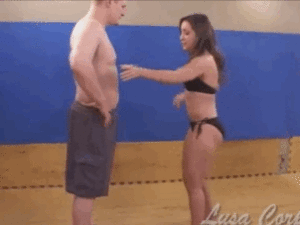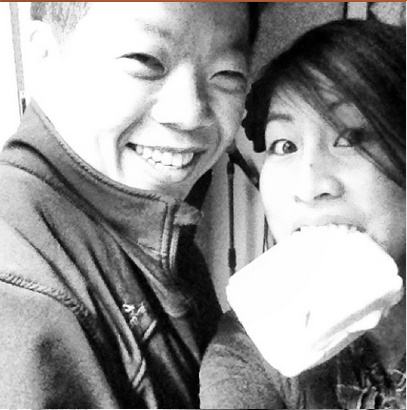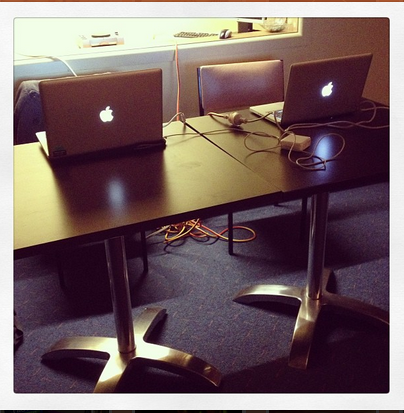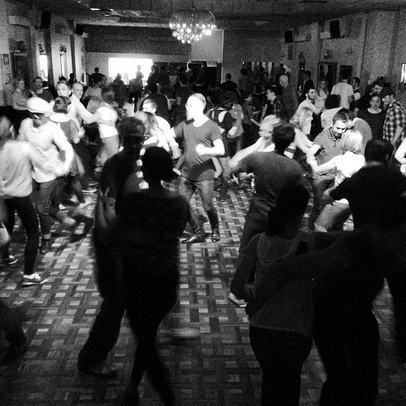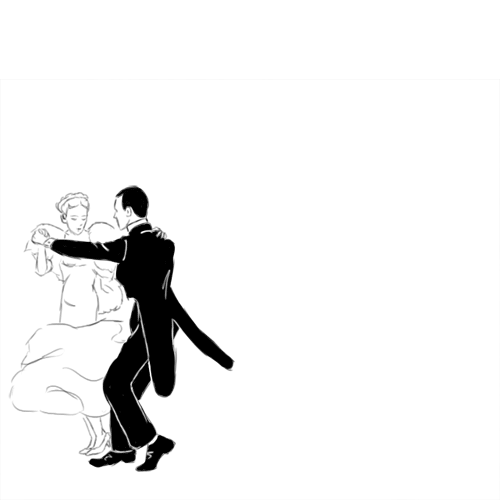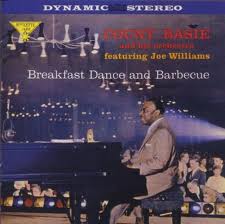Well, it’s 6.30am, and I’ve been awake since 5. My sleep cycle is well and truly borked. Curse you, jet lag. Why is that staying awake while flying around the world in a plane is more disruptive than staying awake dancing, eating, laughing, and talking in irregular patterns over several weeks?
I’m back from two weeks in Herräng (weeks 2 and 3), and a bit of time in Stockholm, and I’m taking a few days before I go back to work. It’d been ten years since I’d been to Herräng, and things had changed a bit. For one, things were more organised, which was a relief. The scale had also leapt: more places to eat, more people, more dance floors, more things to do. I was there to dance and DJ this time, rather than to ‘research’, so I approached each day in a different way.
I have lots of things to talk about, but I can’t quite keep hold of my thoughts, so I’m not sure how coherent this will be. Things I’d like to talk about, in no particular order:
- the ‘how to DJ session’ in the library in week 3;
- the way the insistence that Herräng is about lindy hop, and lindy hop is ‘such a happy dance’ makes it difficult to talk about problems or serious issues within the dance and event;
- the somewhat disturbingly uncritical ‘spread the dance/grow the community’ discourse that dominates and justifies most activities (including a particular brand of cultural imperialism);
- gender politics in the DJing and dancing culture of the camp (and the way critical engagement with this is forestalled by the ‘let’s just have a nice time/hedonism is us’ vibe);
- the sheer joy and wonder of the Frankie Track in week 2;
- teaching practice, and the balance between content and practice;
- the effects of a coherent teaching approach in the Frankie Track versus the usual overall relationship between individual workshops at a dance weekend. I will say this: the Frankie Track was amazeballs because all the classes were linked by a coherent theme and concept: teaching Frankie Manning’s content, teaching classes in the way he taught classes, emphasising his priorities (MUSIC! PARTNERSHIP! SIMPLICITY! RHYTHM!), drawing on the old timers’ approach to learning dance generally…. and MORE;
- the challenges and excitement of the beginners’ half week of tap in week 3;
- the ebb and flow of energy and people and vibe over the course of a week;
- economic factors and the effect of the Herräng Dance Camp’s decades of involvement in this small town’s economy and society;
- the Swing Kids, Swing Teens and the way having children in the camp in week 2 provided social balance to the ‘hedonism’ of the camp, which was largely lost by the end of week 3;
- hierarchies, power, and privilege in the camp;
- the wheeling and dealing and networking and lobbying for work behind the scenes, from teachers, DJs, and organisers;
- labour, work, gender, and knowledge in the Herräng economy;
- mindfulness, computer literacy and online culture in camp (and how this had changed in the ten years since my last visit);
- mindfulness, work, obsessive personalities, and the luxury of time in tap dance;
- the argument that all DJs should learn to play a musical instrument if they want to be ‘good DJs’ (and the associated issues of power, time, labour, gender, and power);
- sex, sexualisation, gender, and scoring a root;
- the significance of Herräng’s place in Europe, and how this affected people’s attitudes to same-sex sex and gender. And how these progressive attitudes were ultimately subsumed or overshadowed by the overwhelming heteronormativity of modern lindy hop;
- food, nutrition, body image, and the importance of the shared table at Herräng: my favourite part;
- defining ‘swing’ music, and Herräng’s emphasis on classic swing era big band jazz, and how this affected DJing styles and set content, and dancers’ responses to music. Relatedly, the tension between modern day dancers’ learning to play music, the accessibility of small NOLA or hot combo style jazz versus the inaccessability of big band jazz for new musicians (ie dancers tend to play in small, hot combos which aren’t what Herräng values, but Herräng does value live music and independent creative projects very highly…. the tension needs a bit of discussion, I think);
As you can see, I have approximately one million things to write and talk about after my time in Herräng. One looming largest in my brains is DJing, as I was a staff DJ in week 2, and one of only 4 women out of 16 staff DJs in the 5 week camp. There were a number of volunteer DJs in the two weeks I was there, but not a whole bunch of them. A higher proportion of them were women than men.
I have a few things to say about how gender, networks of association and labour, and the professional skills required of DJs (primary of which is networking, in this case) work in Herräng, but I don’t really have the brains to articulate them properly here. In sum, though, I was very surprised by how few women DJs there were, after the last couple of years in Australia where women far outnumber men in the higher, most experienced ranks of lindy hop DJs. To the point where for the last MLX I had only one male DJ on the DJ team.
My approach to hiring DJs for events is to look for the most capable, most professional, most skilled, most useful and talented DJs, regardless of gender. They need to be not too over-exposed, and yet still have a degree of popularity with dancers (ie, be ‘in demand’). They might not be quite where they should be, in terms of experience or expanse of music collection, but I’m willing to invest in someone with promise and a good, strong work ethic.
I think that the reason I end up with more women than men, is that I actively seek out DJs, rather than waiting for them to approach me, and I put quite a bit of work into long term development for DJs. My own gender is probably significant too, though I’m often described as ‘intimidating’ by other women. But I’m very yolo about that: life is too short to worry about whether you intimidate other people. And I know other DJs and DJ organisers who are both male and very approachable.
I find that male DJs are more willing to put their hands up for gigs (to approach me for gigs) than women, and that women DJs are more critical of their own DJing, needing more encouragement, and also looking for more critical feedback on their DJing. The latter makes most women much better DJs (because they are open to improving, and open to communicating about their own DJing, and less defensive about their DJing), the former makes women less excellent at developing professional networks and ‘taking risks’ by applying for jobs they might not be ready for. They tend to play it too safe, and be more intimidated by hierarchies. There are male and female exceptions to these things, but very few. Very, very few.
My approach involves long term planning and development, including encouraging newer DJs, providing references and recommendations for new DJs with smaller events (so they can get the experience I need for the bigger events I work for), and keeping my local scene networks healthy – talking to people in different scenes to keep my finger on which DJs are looking and sounding good, and good to work with.
I’m also very keen on providing working conditions which make DJing more accessible for people: friendlier, safer, healthier, clearer (guidelines, etc), equitable pay, an open DJ recruitment process (so people know who to contact and how if they want to DJ, rather than using a quiet system of personal networks), and I am quite aggressive about getting feedback on my own work, and on the DJs’ experiences, so I can keep improving things. I think this transparency is the most important part of encouraging diversity in the DJing team: I am open about my ideas, process, and thinking.
Dargoff was the DJ coordinator for Herräng, and he was just a joy to work with. I don’t know his policies or approach to booking DJs for Herräng, so I can’t comment on them here, but I couldn’t find fault with his work. There are, however, broader systemic issues which make it harder for women to get into these higher profile DJing gigs which require active, fairly aggressive strategies from organisers to overcome. I simply don’t know enough about how Herräng works to be able to comment on this, though. And I don’t even know who organised the DJs in previous years. But I do have some ideas about international DJing culture, and most particularly DJing networks and interpersonal and professional associations which might be useful in this discussion. Again, my lack of experience here makes me reluctant to comment more. I have some ideas, but I just don’t think I know enough to start speculating.
So, when it comes to my experiences DJing at Herräng, I give it a big thumbs up, and I give all my fellow DJs, Dargoff, the huge sound crew, and the event organisers a big huzzah. It was a really great experience, and while challenging in some moments (looong sets are loooong), I would absolutely leap at a chance to do it again. I feel privileged and honoured to be a staff DJ at an event I admire so much, and I learnt SO MUCH about DJing over the two weeks I was there. I also made some new and good friends, and realised I have a lot to learn about the international DJing scene.
I also realised Australia is really isolated from the rest of the lindy hop world. This makes it harder for DJs to crack the higher echelons of DJing, but it has also had effects on our approach to labour and pay and professionalism. Overall, though, I’d say that Australia has quite a few DJs who are not only as good as, but better than some of the DJs I heard in Herräng, and that our lindy hop scene as a whole is something to be proud of. We aren’t a cultural backwater, we’re just a really distant tributary.

